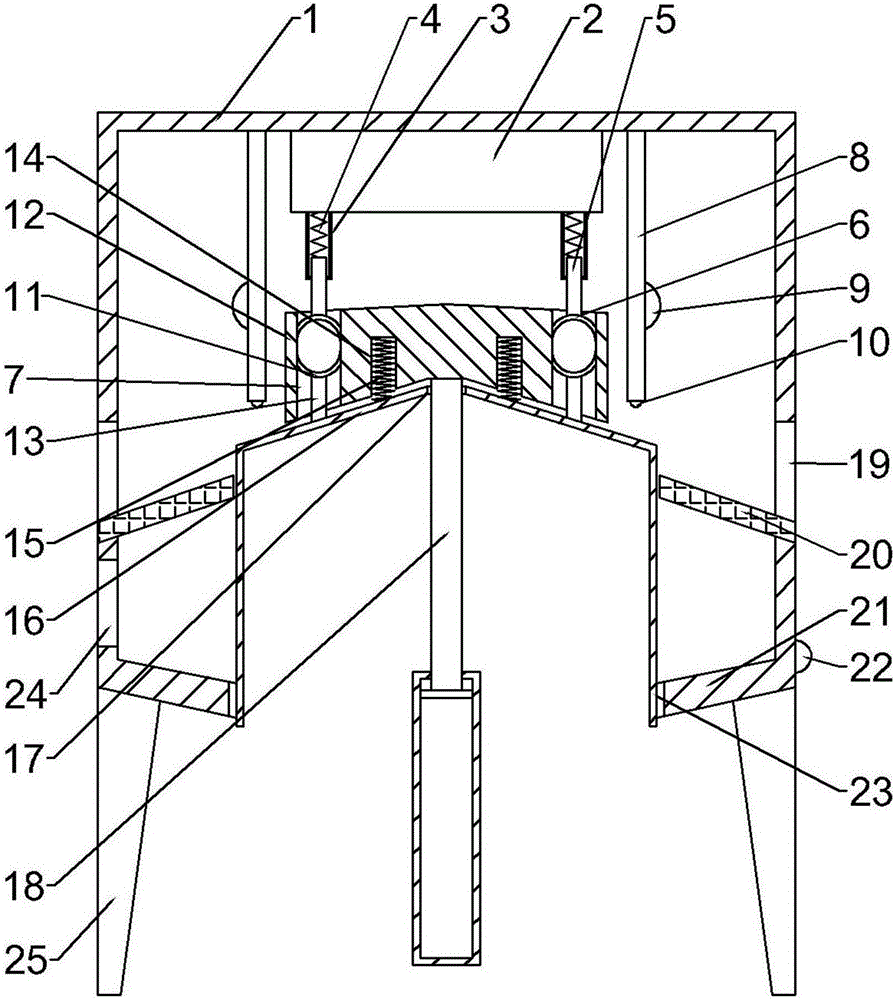Forming device for producing organic fertilizer
A molding equipment and organic fertilizer technology, applied in the direction of mold extrusion granulation, etc., can solve the problems of poor appearance and inconsistent organic fertilizer granules, and achieve the effect of convenient operation, good molding effect and simple structure
- Summary
- Abstract
- Description
- Claims
- Application Information
AI Technical Summary
Problems solved by technology
Method used
Image
Examples
Embodiment Construction
[0017] The technical solution of this patent will be further described in detail below in conjunction with specific embodiments.
[0018] see figure 1 , a molding device for the production of organic fertilizers, comprising a housing 1, a fixed block 2 is fixedly connected above the inside of the housing 1, and a plurality of outer sleeves 3 are fixedly connected below the fixed block 2, and the outer sleeve 3 The upper connecting rod 5 is sleeved inside, the first spring 4 is fixedly connected above the upper connecting rod 5, the upper end of the first spring 4 is fixedly connected with the inner bottom of the outer sleeve 3, and the lower end of the upper connecting rod 5 is fixedly connected with upper mold 6;
[0019] Both sides of the fixed block 2 are symmetrically fixedly connected with push rods 8, and the middle part of the housing 1 is provided with a connecting block 12. The through hole 7 is located directly below the upper mold 6, and a first guide plate 16 is ...
PUM
 Login to View More
Login to View More Abstract
Description
Claims
Application Information
 Login to View More
Login to View More - R&D
- Intellectual Property
- Life Sciences
- Materials
- Tech Scout
- Unparalleled Data Quality
- Higher Quality Content
- 60% Fewer Hallucinations
Browse by: Latest US Patents, China's latest patents, Technical Efficacy Thesaurus, Application Domain, Technology Topic, Popular Technical Reports.
© 2025 PatSnap. All rights reserved.Legal|Privacy policy|Modern Slavery Act Transparency Statement|Sitemap|About US| Contact US: help@patsnap.com

